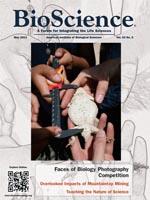Responding to our recent article (Pedlar et al. 2012), Benito-Garzon and colleagues point out that extreme climatic events should be taken into account when selecting regenerative material for forestry-related assisted migration (AM) operations. Although technical considerations around seed movements were not the focus of our paper, we concur with their position and welcome the opportunity to expand on this topic.
Benito-Garzon and colleagues emphasize the importance of considering extreme minimum temperatures when matching planting material and planting sites under climate change. Drought, heat waves, and spring freeze phenomena (Gu et al. 2008, Reyer et al. 2013) should also be recognized as extreme weather events that potentially play critical roles in determining the outcome of AM efforts. Although Benito-Garzon and colleagues raise the issue of climate extremes in the context of forestry AM, climate extremes are likely to play an important role in other types of AM, as well (e.g., species rescue; Pedlar et al. 2012).
The considerable uncertainty regarding projections of extreme climatic events warrants further attention. Summarizing the accuracy of global circulation model (GCM) projections over the twentieth century, Seneviratne and colleagues (2012) reported that the highest accuracy was associated with broadscale, temporally averaged estimates of mean temperature, whereas the lowest accuracy was associated with estimates of climatic extremes at fine spatial and temporal resolutions. Although the latest round of GCM projections shows promise with regard to temperature extremes (Sillmann et al. 2013), accurately predicting extreme cold events (such as the one described by Benito-Garzon and colleagues), droughts, heat waves, and late frosts at specific locations remains extraordinarily challenging.
Our focus on climate extremes and their associated uncertainty is not intended to deter forest managers from cautiously exploring AM as a tool for climate change adaptation. In fact, as the climate changes, plantations regenerated using local seed sources are also expected to experience suboptimal growing conditions and changes in the frequency and magnitude of extreme events such as droughts and heat waves; thus, risks exist in the absence of AM, as well. The issues raised here underline the importance of managing risks at reforestation sites through recognized strategies such as employing multiple seed sources, using established field trials to guide seed movements, and exercising caution and humility when calculating migration distances.





